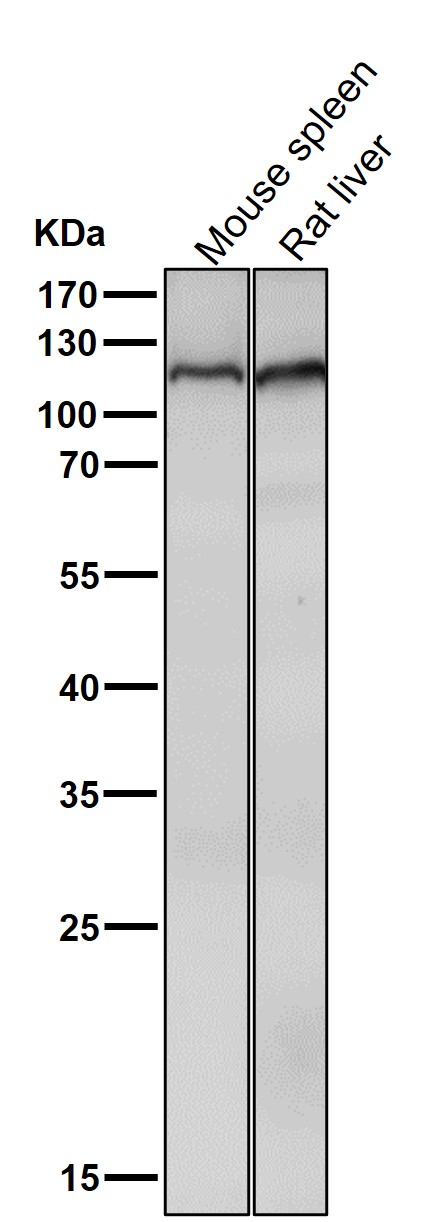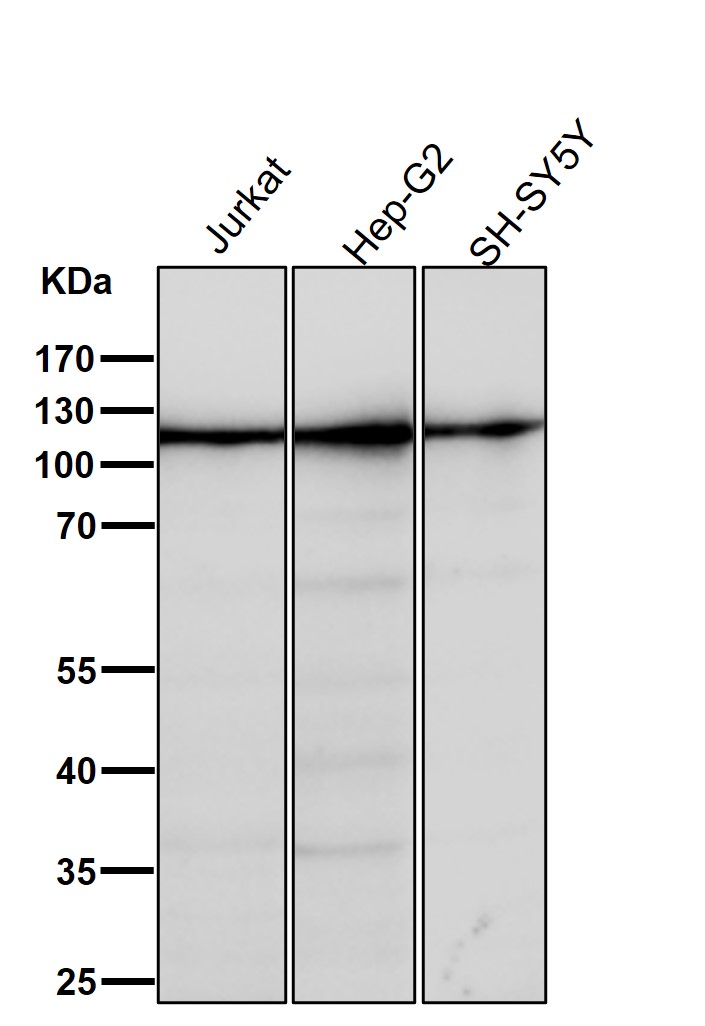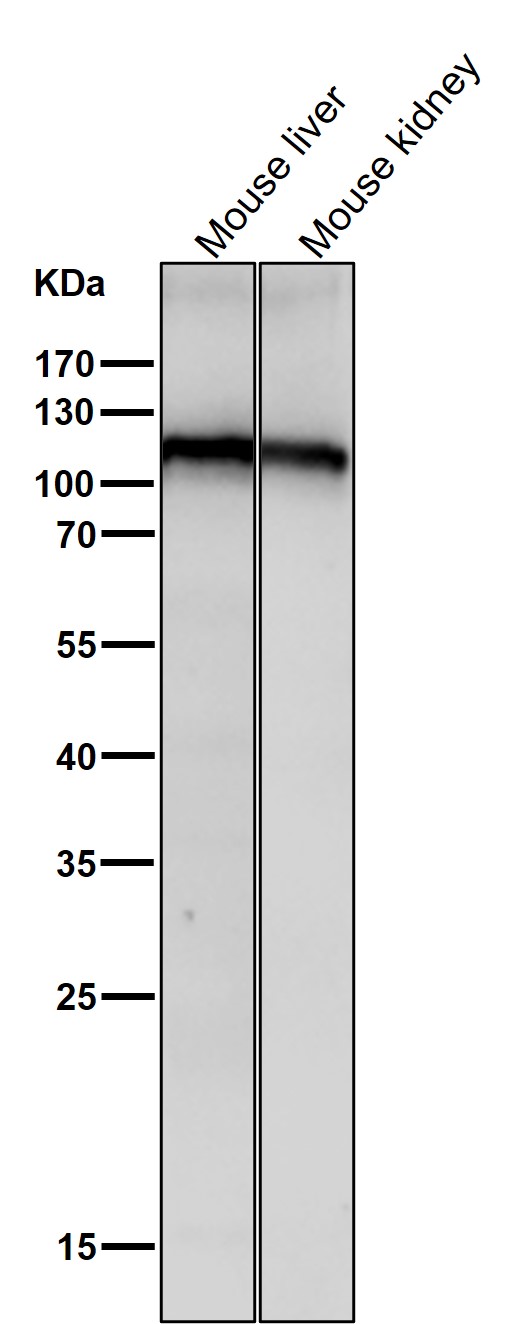


| WB | 咨询技术 | Human,Mouse,Rat |
| IF | 咨询技术 | Human,Mouse,Rat |
| IHC | 1/100-1/200 | Human,Mouse,Rat |
| ICC | 技术咨询 | Human,Mouse,Rat |
| FCM | 咨询技术 | Human,Mouse,Rat |
| Elisa | 咨询技术 | Human,Mouse,Rat |
| Aliases | gb110; MOV 10;;MOV10 |
| WB Predicted band size | 114 kDa |
| Host/Isotype | Rabbit IgG |
| Antibody Type | Primary antibody |
| Storage | Store at 4°C short term. Aliquot and store at -20°C long term. Avoid freeze/thaw cycles. |
| Species Reactivity | Human,Mouse,Rat |
| Immunogen | A synthesized peptide derived from human MOV10 |
| Formulation | Purified antibody in PBS with 0.05% sodium azide,0.05% BSA and 50% glycerol. |
+ +
以下是3篇关于MOV10抗体的参考文献,简要概述其内容:
---
1. **"MOV10 suppresses retrovirus infection by antagonizing Gag assembly and host factors"**
*作者:Bogerd, H.P. et al. (2014)*
摘要:研究揭示了MOV10通过抑制病毒Gag蛋白组装及干扰宿主因子来限制逆转录病毒感染。文中使用MOV10抗体进行免疫沉淀,证实其与病毒RNA的相互作用,为抗病毒机制提供证据。
---
2. **"MOV10 as a novel RNA-binding protein involved in primary microRNA processing"**
*作者:Li, Y. et al. (2016)*
摘要:该文献发现MOV10参与初级microRNA加工过程,通过RNA免疫沉淀(RIP)和Western blot(使用MOV10抗体)证明其与Dicer和Ago2的关联,提示其在RNA代谢中的调控作用。
---
3. **"Antiviral activity of MOV10 in HIV-1 replication requires its helicase activity"**
*作者:Furtak, V. et al. (2010)*
摘要:研究通过siRNA敲低和过表达实验,结合MOV10抗体的免疫荧光技术,证实MOV10的抗HIV-1活性依赖其解旋酶功能,并定位其在细胞质中的抗病毒作用。
---
这些研究均利用MOV10抗体进行蛋白检测或功能分析,涵盖病毒抑制、RNA代谢等方向,适用于实验方法参考。如需具体实验细节(如抗体货号),建议查阅原文补充。
The MOV10 antibody is a crucial tool for studying the MOV10 protein, an RNA helicase involved in various cellular processes. MOV10 (Moloney leukemia virus 10 homolog) belongs to the UPF1-like helicase family and plays roles in RNA interference (RNAi), microRNA (miRNA) processing, retrotransposon silencing, and antiviral defense. It interacts with components of the RNA-induced silencing complex (RISC) and participates in post-transcriptional gene regulation by unwinding RNA secondary structures or displacing proteins bound to RNA. MOV10 also restricts retroviral replication by inhibiting reverse transcription and viral DNA integration.
Antibodies targeting MOV10 are widely used in techniques like Western blotting, immunofluorescence (IF), and immunoprecipitation (IP) to investigate its expression, localization, and molecular interactions. These antibodies are typically raised against specific epitopes, such as the N-terminal or C-terminal regions of the protein, and are available in monoclonal or polyclonal formats from various host species (e.g., rabbit, mouse). Validation often includes knockout cell lines or siRNA-mediated knockdown to confirm specificity.
Research applications of MOV10 antibodies span virology, neurobiology, and cancer biology, as MOV10 dysfunction is linked to neurological disorders, viral susceptibility, and tumorigenesis. Studies also explore its role in maintaining genomic stability by suppressing mobile genetic elements. Overall, MOV10 antibodies are vital for dissecting the protein's multifaceted contributions to RNA metabolism and cellular homeostasis.
×